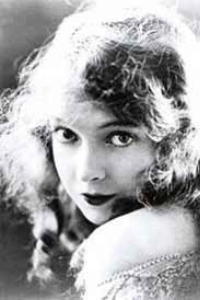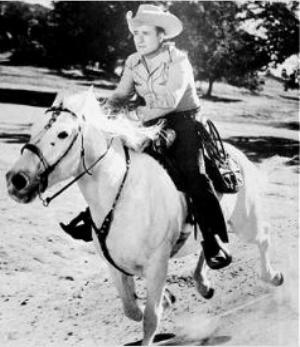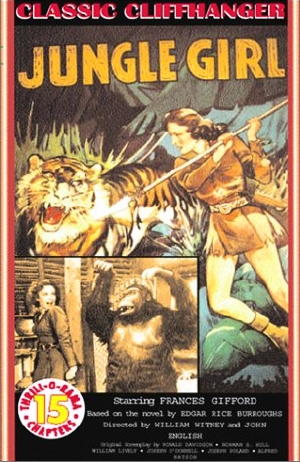| By Bob Weaver
Movies for better or worse have shaped our lives from early on, even in the hills of West Virginia.
Movies were first brought to Orma, Arnoldsburg and Grantsville, sometimes in vacant buildings,sometimes in tents and sometimes in structures built for a movie house.
Silent movies came to Calhoun before World War I, shown in school buildings and under tents. Before that was the magic lantern show, slides of far away places or comical scenes projected on the walls from kerosene lit projectors. Randall Whytsell said he remembered such a show coming to the Richardson church.
The late Madeline Stutler Lynch said she remembered going to see a silent movie in the village of Arnoldsburg, a forerunner to talkies which were shown at the Arnoldsburg movie house in the 1930s.
Grantsville's first official "movie picture show" was opened to the public in 1921. The newspaper reported "Saturday night, the first picture shown being "The Way of a Man with a Maid" featuring Bryant Washburn. A fair sized crowd, considering the weather, was present."
"The home for the picture show is a fine one. While it is not yet entirely finished, is comfortable, and when completed will be one of the most modern and up to date buildings in the Little Kanawha valley. Nothing but the very best pictures will be shown, it being the intention of Manager Fred Hardman to bring the highest class productions that can be obtained."
 There will be a show Saturday night, Lillian Gish (pictured left)in "True Love Susie," a fine production and one that the patrons of the show will be glad to see." There will be a show Saturday night, Lillian Gish (pictured left)in "True Love Susie," a fine production and one that the patrons of the show will be glad to see."
"There will be no shows after Saturday night until the close of the Baptist revival, when a regular program made up of the best in pictures will be started, with a show every Monday, Wednesday and Saturday nights."
A few older citizens would remember the movie house located on lower Court Street, later known as the American Legion Hall. Bands, plays and minstrels entertained the community accompanied by movie fare.
Some famous country music stars made frequent appearances at the movie houses or at the Log Cabin Park at Mount Zion.
An ad read: Wallace Reid in "Hawthorn of the U.S.A." He risked his last five francs at Monte Carlo and broke the bank. With his rebel soul and a jingle of coins, he started out to topple over kings. Then one day his hat blew over the royal garden wall and - yep, you guessed it! A GIRL! Revolution off! "
The ad promised residents they would see "A picture sizzling with punch, laughs and adventure ... plus a a special added feature, a Mack Sennett Comedy, "Love's False Faces."
Meanwhile up on the Fork, a movie house was built by Otis Conley in the 1930's, a business venture smack dab in the Great Depression. Another movie house was opened in Arnoldsburg, but not as "sophisticated."
Both had to be powered by generators - no electricity available.
The Orma Theater was started by Holly Stump, who owned a nearby auto repair shop, and Carl Jarvis, who lived well after ninety-years and lived on Meadow Run.
Jarvis was interviewed about the Orma Theater, for part two of this story.
Grantsville's best known movie house was the Kanawha Theater on Main Street in the late 30s, which was followed by the Mt. Zion Drive-In in 1953, no longer in operation.
The Kanawha Theater was recalled in SUNNY CAL JOURNAL - "Whip Wilson, Nyoka And Frozen Custard - Memories Of The Kanawha" (6/28/2003) by Bob Weaver.
I suppose today's crop of kids will treasure their high-tech addicted memories, but I really believe treasured memories are more important because of their scarcity.
There was scarce media entertainment in Sunny Cal 75 years ago beyond Saturday morning radio, Big John and Sparky or Let's Pretend, or the evening programs like Superman leaping tall buildings with a single bound, the Shadow, who always knows, and the Lone Ranger riding out of town with someone finally asking, "Who was that masked man?"
And we had a few scratchy 78 rpm records, and those exciting new 45's with the big hole in the middle.
But most importantly we had the Kanawha Theater, owned and delicately operated by John and Helen Cook. It was Grantsville's second movie house, after the silent movie era.
John would invite the entire Grantsville Graded School to movies he thought kids would like, and they would march single file down High Street to the picture show on Main Street.
The grades would be dismissed in shifts to see the films for 10 cents, if they had it. If they didn't, it was all right. I remember seeing the Gregory Peck film, "The Yearling," right after WWII, as a member of Ms. Thelma Stump's first grade. Back at the school house we had the "Movie of the Month," usually ESSO travel films
with women kissing the heads of dangerous boa's, or trips through the Amazon rain forests.
John was a great promoter, and he really took pride in his movie business. He would often come out and say a few words before the feature began, or later at his drive-in movie he would get on the speaker system and welcome you, like an invited guest.
It was the anticipation of getting another twenty cents to go to the Kanawha that stirred the mind at bedtime. Matinees on Saturday, sometimes two, and two showings every night of the week, and sometimes you couldn't get a seat.
Saturday was the big kid's day, with a western, newsreel, cartoons, and the ever exciting cliff-hangers, the fifteen chapter serials.

Whip Wilson
Roy Rogers, Gene Autry, Lash LaRue, Tex Ritter, Charles Starrett as the Durango Kid, Rex Allen, Randolph Scott, and Whip Wilson. What do you mean you've never heard of Whip Wilson? I touched his hand one Saturday evening right there in the crowded Kanawha theater, when he came down from the stage and passed out his autographed pictures. He flipped and cracked his whip a few times, picked and sang a cowboy song, and then we all settled back to watch his adventures on the big screen.
The serial would bring you back, with total recall of last week's near death experience, a stagecoach crashing over a rock cliff or Superman losing his powers to the bad guy with Kryptonite exposure, to mystically pass through the needle of survival and live again for another fifteen minutes.

I can still see the faces of the B-playing character actors who made the likes of Undersea Kingdom, based on Jules Verne's story, Batman and Robin, Rocketman, Superman, and Tarzan. Most memorable was Nyoka, the Jungle Girl, a female Tarzan-type with leopard loin cloth and a white satin bra that glistened as she swung from tree to tree. How could you forget.
Of course there was the popcorn and soft drinks, in the early days not more than ten cents each. The big hit was soft ice cream, first introduced to Sunny Cal by Cook and sold as "frozen custard." I thought I would never get my fill, and one time I ate four cones.
It was there that I saw "Gone With The Wind" for the first time with my dad and mom, and the first wide screen movies - Cinemascope, with Robert Mitchum and Marilyn Monroe in "River of No Return" and Elvis Presley in "Love Me Tender." John Cook knocked the walls down on either side of the pint-sized screen and installed the largest wide screen I had ever seen.
Sunday and Monday they showed more refined movies, Esther Williams
swimming, Fred Astaire dancing, all those great MGM pageants.
Bill Harris of Grantsville, (now deceased) was the last of the old time movie projectionists. He said the big 35mm Simplex projectors, illuminating the screen with their carbon arcs, would make the tiny booth get sweating hot as he switched from reel to reel, staring through the tiny window, adjusting the picture
and sound.
"One time my knee hit the volume control on the amplifier just as a train was coming down the tracks. The volume went from seven to twelve, and the first four rows fell backward," he said.
The old equipment produced a brilliant and sharp image on the silver screen, much better than the postage stamp movies in the mall. It was a delight.
John and Helen went out to Mt. Zion about 1952 to put up the first drive-in movie in the area. And what a treat it was.
The old Kanawha lasted about a year after the drive-in opened, as TV kept folks home watching wrestling and "Saturday Night at the Movies."
Before the movie business got bad, John and Helen, now both long gone, sold out and went to operate the lodge at Blackwater Falls, and later one of Parkersburg's finer hotels.
But the old movie house was their labor of love, which they extended to kids and parents who fired up the family car or caught the neighbor's truck, coming from every holler in the county to spend a couple hours marveling at the glory of a greater world.
Today, the Mt. Zion Drive-in was among America's outdoor theater survivors, according to Bonnie Bever, one of several generations of her family who have engaged in the movie business, first starting in Nicholas County many years ago."It is in my blood," she said. The Bever's operated the drive-in the past
twenty years or more.
Now it is closed because of digital technology.
In those early years, patrons from several counties came to the drive-in. Sometimes they had to wait for the second show. It was a time and place when kids and adults got in their cars and trucks and finished their day, relaxing at a movie, eating popcorn and hot dogs. Sometimes they brought the family dog.
Sometimes there were so many cars, John Cook directed traffic with his flashlight.
It was a place to be seen, not to forget the opportunity to work on inter-personal relationships.
The movie was often not the important part of going to the drive-in
Drive-ins got the main stream features many months after their releases to indoor theaters.
In the early days the fare was "B" movies, even "C" movies, some of the worst ever made. They were so bad, they were good.
Most were adventures, teen shows, cheap sci-fi's or goofy monsters taking over the world. If you don't believe this, rent "Plan 9 from Outer Space."
John Cook would get on the speaker system in those early days and run down the snack bar menu several times, using such words as "delicious" and "mouth-watering."
| 


